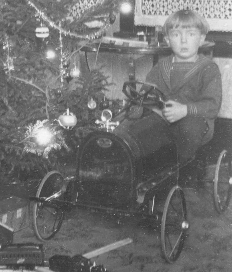 For many American teens, getting a driver’s license functions as a “rite of passage.” It marks a concrete, visible step towards adulthood and independence. Small wonder, then, that teenagers are keenly interested in getting this important document. What must a teen do to get a driver’s license? The precise answer depends on what state the teen lives in. I will outline for you the basic requirements that the State of Illinois sets forth for teens who wish to get a driver’s license.
For many American teens, getting a driver’s license functions as a “rite of passage.” It marks a concrete, visible step towards adulthood and independence. Small wonder, then, that teenagers are keenly interested in getting this important document. What must a teen do to get a driver’s license? The precise answer depends on what state the teen lives in. I will outline for you the basic requirements that the State of Illinois sets forth for teens who wish to get a driver’s license.
When a student turns 15, he can enroll in a driver’s education course, either through the public school or through a commercial driving school. Upon passing a written test covering the “rules of the road,” along with a vision test, the student can get a “learner’s permit.” With a learner’s permit, the student will be able to practice driving on the road, provided he is accompanied by an adult, licensed driver.
The driver’s education course actually consists of two components. The first is the in-class component (also known as “book”), which has an “emphasis on the development of knowledge, attitudes, habits and skills necessary for the safe operation of motor vehicles including motorcycles insofar as they can be taught in the classroom, and in addition the course shall include instruction on special hazards existing at, and required extra safety and driving precautions that must be observed at, emergency situations, highway construction and maintenance zones, and railroad crossings and the approaches thereto.” This classroom instruction is required to be at least 30 hours.
The second component of driver’s ed is practical, known as “behind-the-wheel.” Students are instructed in driving a dual-control car on public roadways with a certified driver education instructor. This practical instruction is required to be at least 6 hours.
To be eligible to take a driver’s ed course, the student must be enrolled in high school (which may be a private school), and receive a passing grade in at least eight courses during the previous two semesters prior to enrolling in a driver’s ed course. In other words, the students cannot slack off academically.
Once the student has successfully completed both the in-class component and the behind-the-wheel component of the driver’s ed course, he will receive his “blue slip.” The blue slip is official acknowledgement of passing the driver’s ed course, and the student will need to take that with him when he goes to get his license. However, having a blue slip is not sufficient – the student is supposed to complete at least 50 hours of practice (in addition to the behind-the-wheel instruction), and he must have had his learner’s permit for at least 9 months before he can even think about applying for his license. He must also be at least 16 years old.
When he has fulfilled the practice and time requirements, and he has his parents’ or guardian’s permission, he can go to a Secretary of State facility (also called “Department of Motor Vehicles” in some states) to take a driving test, or “road test.” The driver’s license examiner will test the prospective driver on various aspects of driving and driving safety: driving down public roads, stopping properly at stop signs and traffic lights, using turn signals properly, parallel parking, and so on. If the student passes the road test, he will get his driver’s license – an important milestone on the way to becoming an adult!

